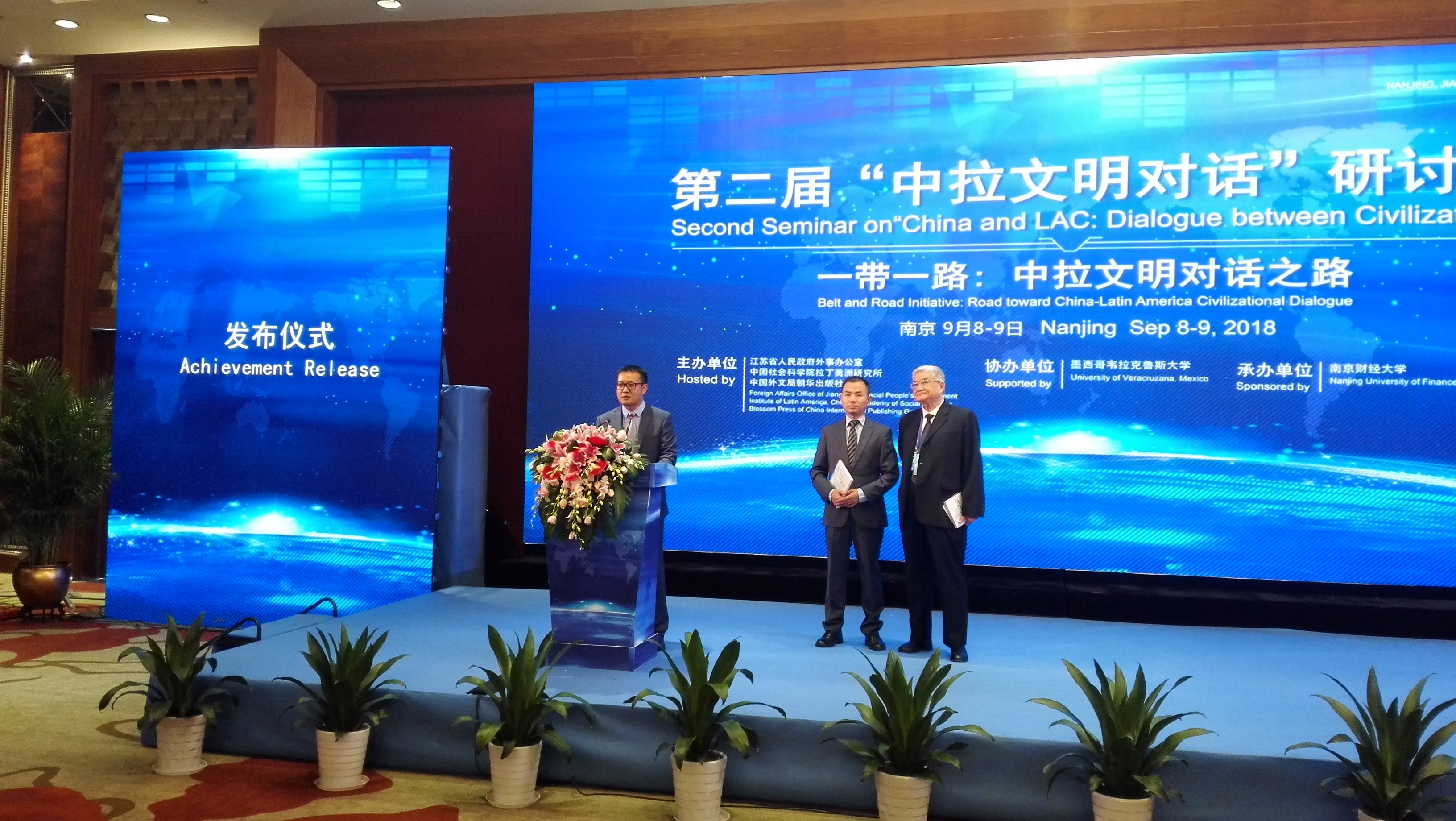China-Latin America dialogue advances mutual prosperity

On Sept. 8, the Second Seminar on “China and LAC (Latin America and the Caribbean): Dialogue Between Civilizations” was held in Nanjing, capital of Jiangsu Province. The participating experts conducted in-depth discussion on China-Latin America cooperation. Photo: Yan Yong/CSST
On Sept. 8, hosted by the Institute of Latin American Studies at the Chinese Academy of Social Sciences, the Foreign Affairs Office of the Jiangsu Provincial People’s Government and the Blossom Press of China International Publishing Group, supported by the University of Veracruz and sponsored by the Nanjing University of Finance and Economics, the Second Seminar on “China and LAC (Latin America and the Caribbean): Dialogue Between Civilizations” was held in Nanjing, capital of Jiangsu Province. The participating experts conducted in-depth discussion on China-Latin America cooperation.
Oscar Rueda, Colombian ambassador to China, said that China has a long history of contact with Latin America. Efrén Calvo Adame, president of the Mexican Chamber of Commerce in China, said that since the end of the Ming Dynasty (1368–1644), modern economic and trade exchanges between China and Mexico symbolized by the “Manila galleon” have lasted for more than 250 years, and many Chinese goods have been transported to South America via Mexico.
Speaking of current China-Latin America cooperation, Jose Luis Bernal, Mexican ambassador to China, said that the relations between China and Latin America are increasingly close, marked by progress in commercial and cultural cooperation with each passing day. Also, the establishment of a comprehensive strategic partnership has provided strong support for the development of bilateral relations.
Patricia Holkemeyer, Costa Rica’s Ambassador to China, said that the “Belt and Road” initiative (B&R) has provided not only new growth opportunities for the world, but also new modes, methods and platforms for developing countries based on mutual understanding and recognition. She said that for one thing, Latin American countries should learn from China’s experience, and for another, they should cooperate with China in the fields of science, technology and infrastructure to develop their own economies.
Calvo said that the B&R has helped Latin American countries such as Mexico better integrate into the global value chain and that such cooperation can enable economic outcomes that benefit people on both sides. He hopes that China and Mexico will formulate long-term bilateral trade development strategies and further facilitate two-way investment.
For future China-Latin America cooperation, Nehemías Celada, deputy consul of Panama in Shanghai, said that the dialogue and cultural exchanges between China and Latin America cannot be ignored. At present, understanding between the two peoples needs to be improved. Meanwhile, academic research on the bilateral relations in non-economic fields needs to be advanced as well.
Anibal Zottele, director of the Research Center on Chinese Studies at the University of Veracruz in Mexico, said that during B&R construction, it’s important for China to fully consider the national conditions of Latin American countries, and those countries also need to reflect upon their own weaknesses. Moreover, he said that China-Latin America cooperation should not be limited to infrastructure cooperation. The two sides need to cooperate more in the education field, cultural exchanges, and technology in the future.
Andres Borquez, an associate professor of economics at the University of Valparaíso in Chile, said that Latin America is not doing enough and far behind China and Europe in terms of trade facilitation. Many trade departments in Latin America have low levels of informatization, cumbersome procedures and insufficient collaboration. In future, China-Latin America cooperation should strengthen exchanges that facilitate trade. By establishing e-government platforms and databases, the bilateral trade can be made more convenient.
(edited by SHAO YIJIA)
